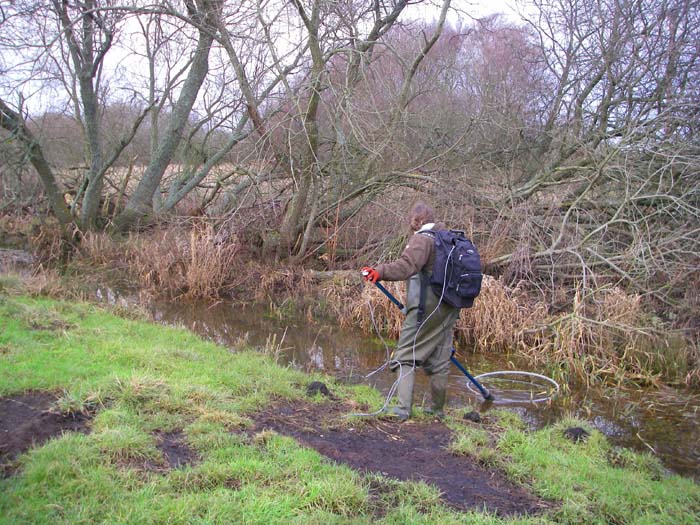

Catch Fish with
Mike Ladle
Information Page
For anyone unfamiliar with the site always check the FRESHWATER, SALTWATER and TACK-TICS pages. The Saltwater page now extends back as a record of over four years of (mostly) sea fishing and may be a useful guide as to when to fish. The Freshwater stuff is also up to date now. I keep adding to both. These pages are effectively my diary and the latest will usually be about fishing in the previous day or two. The Tactics pages which are chiefly 'how I do it' plus a bit of science are also updated regularly and (I think) worth a read (the earlier ones are mostly tackle and 'how to do it' stuff so if you are new to fly fishing or spinning these are the ones for you).
22 January 2010.
Pike - lost and found.
I had an afternoon pike fishing the other day. My objective was to catch a fish or two for tagging. I knew I had one or two baits in the freezer so I rigged up a single, debarbed, circle hook to a length of knottable wire, slipped a cork onto the line to stop the bait sinking into the weeds and set off to the river. It was reasonably mild and the effects of the last heavy rain were beginning to wear off so the water was relatively warm, low and clearish. I picked an eight or nine inch bait (the only size I had) out of the bag, hooked it through both lips and cast it into a nice, slowly eddying slack under my bank. Every few seconds I gave the rod a twitch to make the bait shoot forward, rise up in the water and then slowly sink again.
The first few spots I tried (I gave them about five minutes each) proved to be pikeless or at least contained no hungry pike. Then as I was walking downstream I met my friend Marina who is studying the behaviour of pike. Marina is using some of the latest tagging technology and also taking fin clip samples for stable isotope analysis. She was carrying even more gear than me in order to try and find some of the smaller tagged pike living in ditches off the main river. Her kit consisted of a long pole with a large ring at the end. By dipping the ring into the water it is, in theory, possible to detect and read the numbers of the transponder-tagged pike. We chatted for a while and then went our different ways.
After this it was a case of good news and bad news for me. The good news was that almost every spot I tried produced a bite. The bad news was that I lost four fish on the trot. Each time the bait was grabbed and I tightened to find the pike apparently firmly on the end. Then after a short while they came unstuck. I saw all the fish so I know that none of them were very big and I put the insecure hook holds down to the big bait small pike syndrome. Of course I was at pains not to hook fish deeply so even with my single hook giving them a long time to take the bait was not an option. Before I packed in I returned to the place where I'd had my first bite and sure enough I managed to hook and land a fish, almost certainly the one that had given me the slip before. I bagged it up and left a note for Marina to find it and check for tags. All in all not my most satisfactory session but better than a blank.
Got one!

Well hooked.

Detecting tags.
